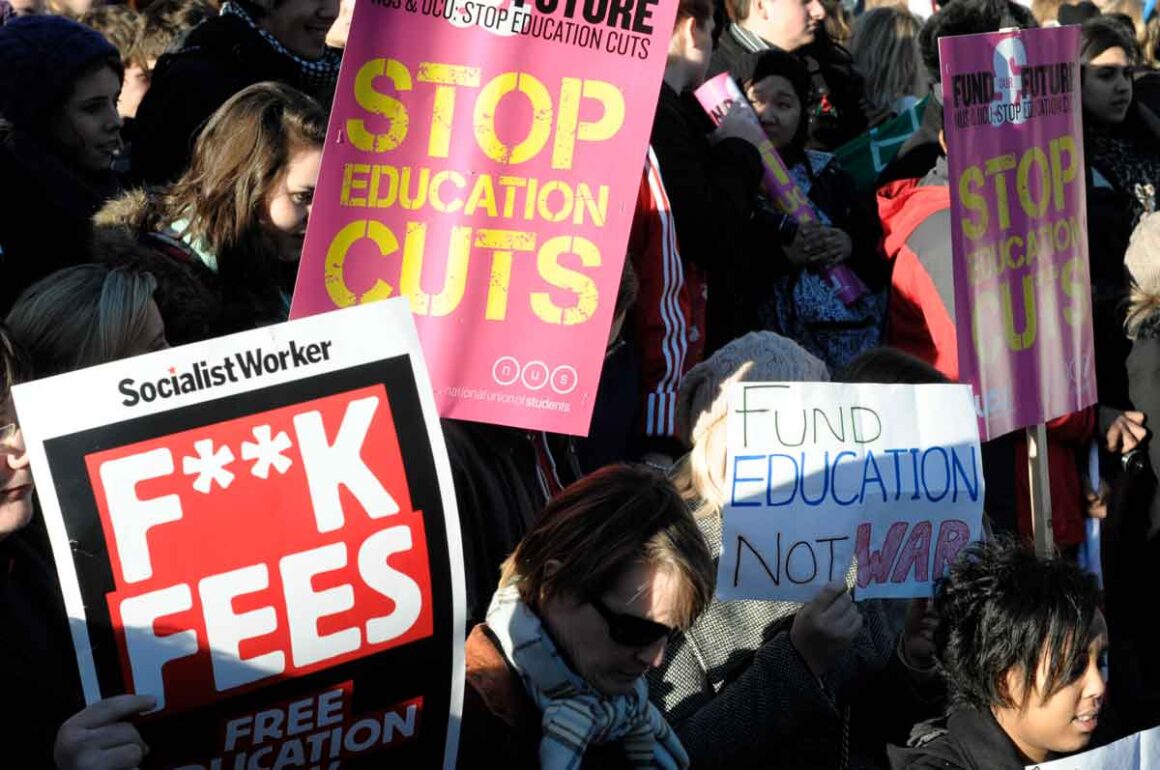

By KD Tait
THE ACTS OF resistance taken by thousands of young people during the student movement of winter 2010-11 shook the government and sparked months of mass opposition to cuts. Democratic general assemblies uniting students with workers and young people, militant demonstrations using self-defence against police violence, and nationally coordinated waves of direct action including boycotts, walkouts and occupations formed the backbone of the biggest, most radical youth movement since the Iraq war.
But the movement was beaten, with parliamentary votes to triple tuition fees and cut EMA demoralising many activists and isolating local struggles.
Now as we enter the new academic year, with the most expensive fees ever, we must prepare for fresh struggles thrown up by government cuts and privatisation. Our aim must be a successful defence of education — abolishing fees and kicking out the private speculators.
To do this means learning the lessons of 2010–11.
Key players
The NUS, who organised the 50,000-strong protest on 10 November 2011, quickly became an obstacle to building a successful fight against fees. After denouncing “violence” they collaborated with the police to shop students, and refused to join any further protests.
For some months the National Campaign Against Fees and Cuts proved how useful a successful united front can be.
By drawing in education activists from a range of political backgrounds, it called for walkouts which mobilised 100,000 young people across the UK.
But unfortunately we failed to unite all the different campaigns like Education Activist Network and Youth Fight for Jobs into a single, democratic movement, which could develop an effective strategy.
It’s important to acknowledge the failure to develop lasting structures which could continue to organise people on the principle that “what parliament can do, the streets can undo”.
Lessons
Students were absolutely right to use the most militant tactics available to them. The symbolic trashing of the ruling Tory party HQ was a decisive turning point that swung public opinion behind the students.
Likewise the rapid spread of direct action and grassroots democracy radicalised huge numbers of young people who are now searching for an alternative to endless cuts and austerity.
The most radical students called for an alliance between students, workers and the unemployed. The Consumer Spending Review and council cuts were sparking widespread protests from hard-pressed workers.
Students took the lead in organising action against tax-dodging companies like Vodafone and banks — making the link between the rich who profit from the crisis and ordinary people who have to pay for it.
Where our movement was isolated and defeated we can learn a powerful lesson from the months of struggle by students in Chile and Quebec, who have succeeded in forming close links with trade unions and winning massive popular support.
Their struggle demands nothing less than the fall of the pro-austerity government.
Students in Britain can play the same role in raising the banner of struggle to draw a broader, more powerful social force — the working class — into the struggle.